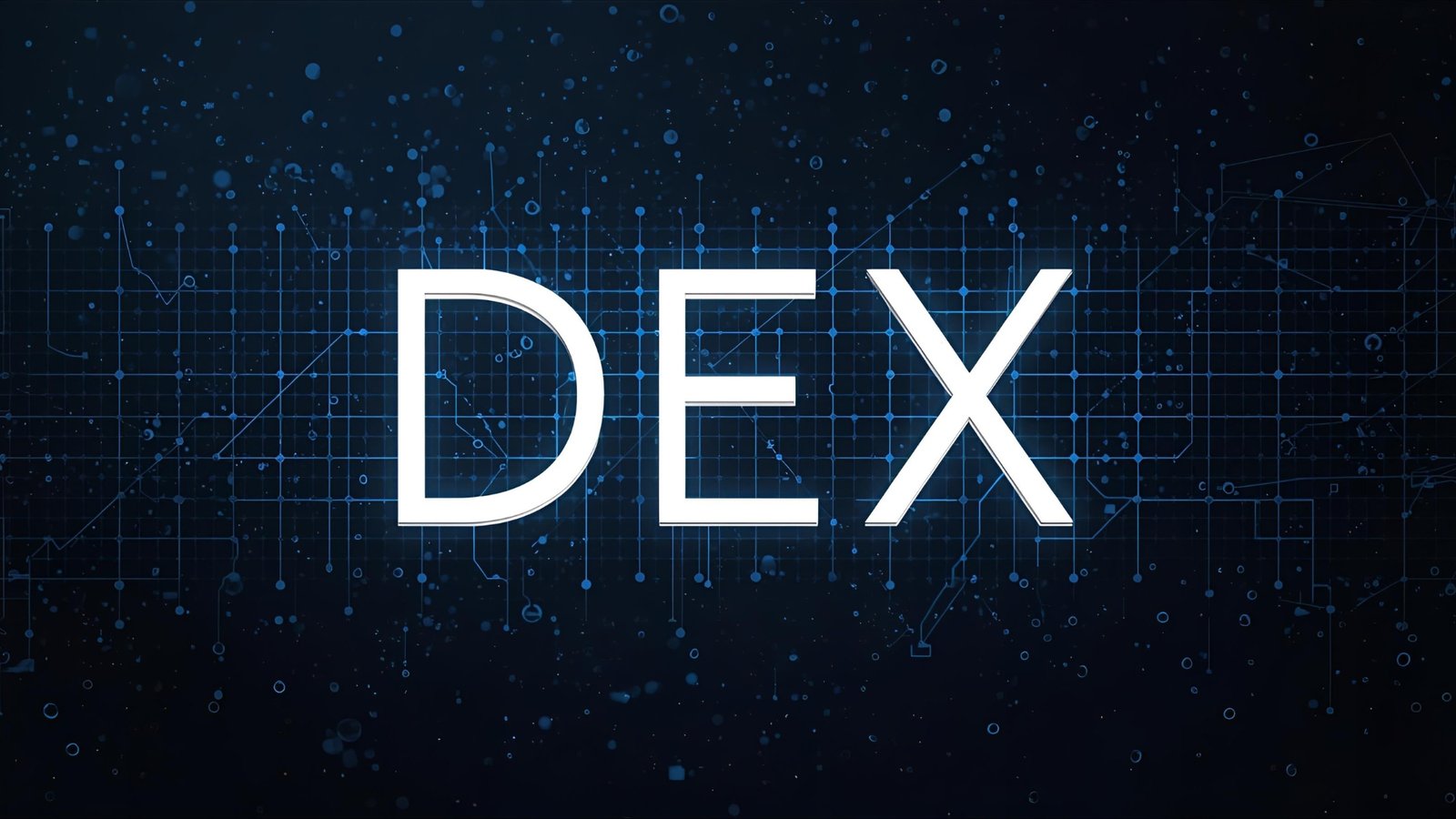The decentralized finance ecosystem has sprinted from experimental smart contracts to a sophisticated, multi-chain economy that moves billions of dollars daily. For builders, traders, and long-term crypto users, finding the most advanced DeFi protocols is no longer about chasing hype; it’s about understanding which systems are engineered for resilience, capital efficiency, and security. In 2025, the leaders in decentralized finance combine innovations like zero-knowledge proofs, modular architectures, intent-based execution, and MEV-aware design to deliver a smoother, safer, and more scalable on-chain experience.
This guide maps the current landscape with an emphasis on what “advanced” truly means: not just total value locked (TVL), but also verifiable security practices, novel mechanisms for price discovery and liquidity, cross-chain reliability, and sustainable token economics. You’ll learn how today’s standout decentralized exchanges, lending markets, derivative venues, liquid staking platforms, RWA tokenization layers, and payment rails are evolving. Along the way, we’ll highlight related concepts—oracle networks, automated market makers (AMMs), liquidity pools, ZK-rollups, account abstraction, and restaking—so you can evaluate opportunities with more confidence.
What Makes a DeFi Protocol Advanced Today
To call a system one of the most advanced DeFi protocols, we should go beyond buzzwords. Several traits consistently show up among the leaders.
Battle-Tested Security and Formal Guarantees
Security remains the bedrock of decentralized finance. Mature protocols now standardize multi-firm audits, continuous monitoring, runtime assertions, and in some cases, formal verification of core contracts. Many also publish bug bounty programs, adopt modular upgrade frameworks with time-locked governance, and segment treasury functions behind multisigs with strict access controls. The most sophisticated systems design around MEV, reduce Oracle surface area, and keep protocol parameters transparent, minimizing room for surprise.
Capital Efficiency Without Hidden Risk
Advanced designs squeeze more from the same collateral. They use concentrated liquidity in AMMs, dynamic interest rates in lending, and portfolio margin models in derivatives. But efficiency is only meaningful if risk is priced correctly. You’ll see isolation modes for volatile assets, capped borrows, insurance funds, and circuit breakers to throttle abnormal behavior. The advanced protocols balance efficiency with risk by default, not as an afterthought.
Interoperability and Cross-Chain Safety
The multi-chain future is already here, but not all bridges are equal. Leading systems adopt canonical messaging, light-client bridges, or ZK verification to move liquidity and instructions—prioritizing cryptographic security over trusted relayers. Protocols that span multiple chains often maintain a single source of truth for positions and collateral, or they are designed with local solvency guarantees to avoid contagion.
User-First UX Backed by Account Abstraction
DeFi’s cutting edge is getting easier to use thanks to account abstraction, meta-transactions, session keys, and sponsored gas. Under the hood, smart order routers and intent-based execution let users describe outcomes (“swap at best price across all DEXs”) while solvers and batch auctions handle the complexity. The most advanced DeFi protocols make powerful strategies feel one tap away.
Governance That Can Evolve
Finally, advanced protocols acknowledge that change is constant. They embed progressive decentralization, clear DAO processes, and transparent treasury management. Off-chain signaling, on-chain voting, delegate incentives, and veto powers for emergency councils form a pragmatic balance of agility and safety.
Advanced Decentralized Exchanges (DEXs)

Decentralized exchanges remain DeFi’s biggest gateway. The current generation blends AMMs with limit order books, and employs cross-chain RFQ engines, TWAMM-style long-horizon trades, or hybrid designs that shard liquidity while keeping prices tight.
Concentrated Liquidity and Active Management
AMMs pioneered passive liquidity, but concentrated liquidity changed the game. By allowing LPs to provide funds inside price ranges, protocols magnify fee earnings per dollar while lowering slippage for traders. The advanced DEXs layer on automated rebalancing, range orders, and smart LP vaults that adjust positions algorithmically. The outcomes are tighter spreads, better capital use, and more predictable returns—so long as LPs understand impermanent loss dynamics.
MEV-Aware Routing and Batch Auctions
Modern routers search many pools and chains at once, modeling gas, slippage, and MEV capture. Some DEXs pair with private mempools or run batch auctions to sidestep sandwich attacks. Others integrate with builders and relays that honor orderflow auctions, returning value to traders. These designs help keep execution closer to the price you see.
Cross-Chain Liquidity Without the Trust Tax
The most advanced DeFi protocols in the DEX arena experiment with ZK-verified bridging and shared sequencers to let orders traverse rollups securely. Liquidity can be atomically swapped across execution environments without relying on a single risky bridge. Over time, this reduces fragmentation and makes the multi-chain experience feel like one venue.
Cutting-Edge Lending Markets
On-chain credit markets are the heartbeat of DeFi. The next wave of lending protocols blends isolation risk, oracle minimization, and dynamic collateral parameters to support more assets with less systemic exposure.
Isolation Pools, Price Bands, and Adaptive Rates
Advanced lenders create isolation pools so that volatile or experimental assets can’t endanger blue-chip collateral. They apply price bands or capped borrows to non-correlated assets and adjust interest rates algorithmically based on utilization, liquidity depth, and market volatility. This lets the protocol scale while guarding against cascading liquidations.
Oracle Design and Minimizing Dependencies
Price feeds remain a critical attack vector. Mature markets diversify oracle sources, add time-weighted updates, and monitor deviations with on-chain keepers. Some pairs remove oracles entirely by using oracle-less collateralization models that reference AMM-derived prices with built-in circuit breakers. The trend is unmistakable: fewer moving parts, fewer surprises.
Under-Collateralized and Real-World Credit
A frontier area is under-collateralized lending backed by on-chain identity, reputation staking, or tokenized claims on real-world cash flows. The most advanced designs align incentives through loss-absorbing junior tranches, enforceable legal wrappers, and transparent performance data. This is where DeFi begins to meet mainstream finance on its own terms.
Perps, Options, and Everything Between
On-chain derivatives now rival centralized venues for innovation. Perpetual futures, options, and structured products thrive on portfolio margin, cross-collateral engines, and off-chain matching with on-chain settlement.
Portfolio Margin and Risk Engines
The cutting-edge uses risk-based margin, where correlated hedges reduce required collateral. A user long ETH spot and short ETH perps should post less margin than someone naked long. Advanced protocols model this in real time, using stress scenarios, vol surfaces, and liquidity-aware liquidation that sells in tranches rather than cliff-edge auctions.
Oracle-Light Designs and Funding Stability
Perpetual funding and option pricing suffer if oracles lag. New systems rely on index prices computed from many sources, guarded by outlier filters and time-weighted medians. Some move to auction-based or batch-settled schemes that lessen oracle frequency while preserving fair pricing. The outcome is lower manipulation risk and steadier funding.
Composability With Structured Products
Options vaults, principal-protected notes, and delta-neutral strategies now ship as composable vaults. Users deposit once, and the vault runs weekly auctions or hedging routines under the hood. Protocols publish performance and risk rules on-chain, so treasury managers and DAOs can allocate with clear expectations.
The Rise of Liquid Staking and Restaking
Liquid staking tokens (LSTs) transformed idle staked assets into productive collateral. The advanced generation optimizes oracle frequency, withdrawal queues, and validator set quality to keep peg stability. Meanwhile, restaking layers let users pledge LSTs to help secure additional services—oracle networks, data availability layers, or shared sequencers—and earn extra yield.
Peg Stability and Redemption Guarantees
Sophisticated liquid staking platforms maintain narrow bands between the token and its underlying stake by enforcing reliable redemption, exit rate limits, and insurance buffers. They publish validator performance and slashing coverage rules, making it easier to compare providers.
Restaking as a Security Primitive
Restaking extends crypto-economic security to new middleware. By delegating stake to external services with strict slashing conditions, protocols can bootstrap trust faster. The advanced designs keep risks siloed, avoid circular dependencies, and make slashing rules auditable so that restaked collateral doesn’t become a hidden systemic risk.
Real-World Assets (RWAs) and On-Chain Cash
Tokenization is not a buzzword anymore. Leading RWA protocols bridge Treasury bills, money markets, invoices, real estate, and trade finance onto chains with transparent legal structures. The most advanced DeFi protocols in this vertical combine KYC-gated pools with public market data, letting DAOs, treasuries, and funds park idle stablecoins in on-chain cash equivalents.
Legal Wrappers and Transparency
The breakthrough is not just tokenization—it’s disclosure. Sophisticated RWA issuers publish attestations, NAV reports, audit trails, and redemption terms that resemble traditional fund documents. Settlement timelines, counterparties, and fees are no longer black boxes, making these assets suitable as collateral in lending markets and as base layers for structured products.
Composability and Treasury Management
Treasuries can route yield from RWA pools into automated buybacks, grants, or insurance reserves. Composable tranche mechanisms allow senior depositors to accept lower returns for first-loss protection from junior tranches, tailoring risk for different DAO mandates.
Cross-Chain Infrastructure and Security
The biggest UX unlock comes from safe interoperability. The advanced crop of interoperability protocols uses light clients, ZK proofs, or optimistic verification to secure messages and value flows across chains without centralized trust.
Intent Layers and Shared Sequencers
Instead of firing transactions at a specific chain, intent layers let users express outcomes. Solvers then compete to fulfill the intent across routes and chains, verified by shared sequencers that coordinate ordering to reduce reorgs and MEV. This pushes complexity out of wallets and into open, auditable markets for execution.
ZK-Verified Bridges and Native Messaging
Where possible, protocols shift to native bridges that verify consensus directly. ZK-verified systems prove that a state transition happened on the source chain, dramatically reducing the chance of replay or signature compromise. The most advanced DeFi protocols that depend on cross-chain actions increasingly require these proofs to accept deposits or honor withdrawals.
Also Read: Best DeFi Lending Platforms in 2024 Top Options Features
Oracles, Data, and the Move to Cryptographic Proofs

Reliable data is the lifeblood of DeFi. The future points to trust-minimized oracles and on-chain proofs that reduce reliance on discretionary signers.
Hybrid Feeds and Data Attestations
Oracles now combine pull and push models, with keepers updating only when prices move outside bands, and verifiers checking signatures or proofs. Some feeds attach attestations about data provenance and latency, so protocols can decide whether to accept a price or trigger safe modes.
Verifiable Computation and ZK-ML
As DeFi strategies get more complex, expect verifiable computation (ZK-VMs) to crunch off-chain models—like ZK-ML for risk scoring or inventory rebalancing—and post succinct proofs on-chain. This keeps sensitive data private while keeping decision logic auditable.
Risk, Insurance, and Backstops
No discussion of the most advanced DeFi protocols is complete without insurance and backstop mechanisms. Beyond simple coverage pools, we now see parametric policies, slashing coverage, and derivative-based hedges that trigger on transparent conditions. Protocols increasingly pre-fund emergency DAOs, define kill-switches with strict scope, and simulate chaos events to practice response. When incidents occur, the difference between an advanced protocol and the rest is how predictably it fails—and how quickly it recovers.
Token Economics That Age Well
Sustainable token models do less, better. Instead of reflexive emissions, advanced designs direct newly minted tokens toward liquidity flywheels with bonding or ve-style vote-escrow that aligns long-term participants. Fees accrue to treasuries and staked governance, with transparent distributions and caps. When emissions taper, the protocol should still thrive on actual usage, not subsidy.
UX: From Power User to Everyday User
The best tech fades into the background. With account abstraction, users sign once and enjoy gas sponsorship, bundled approvals, and session keys that allow trusted apps to operate for a limited time. Wallets embed simulation and transaction previews so users understand slippage, routing, and collateral effects before clicking confirm. Meanwhile, compliance layers allow enterprises to interact via allow-lists and policy controls without giving up the benefits of open networks.
How to Evaluate a Protocol Yourself
When you encounter a new platform claiming to be among the most advanced DeFi protocols, apply a checklist that goes deeper than TVL.
Read the Docs and the Code Path
Focus on the threat model and the upgrade process. Is there a time lock on upgrades? Who controls kill-switches? Are audits listed with full reports? Do they run a bug bounty with clear scope? Are core modules immutable where feasible?
Stress-Test the Mechanism
If it’s a DEX, simulate swaps under stress and watch for slippage and revert behavior. If it’s a lender, test borrow and repay across utilization regimes and examine liquidations. For perps, compare funding and index prices across venues. Favor protocols that publish post-mortems and risk dashboards.
Model the Economics
What happens when emissions decline? Are fees sufficient to sustain rewards? Are there inflation caps and treasury policies? Advanced tokenomics should have a credible path to neutrality where users stay for utility, not incentives.
Where DeFi Is Headed Next
The arc is clear: modularity, cryptographic verification, and better UX. Expect more ZK-rollups tailored to specific financial workloads, local fee markets to keep costs stable, and real-time compliance attestations so institutions can plug in.
As intent layers mature, users will care less about which chain they’re on and more about the outcomes they achieve. The winning protocols will be those that internalize risk, externalize verifiability, and make sophisticated finance feel simple.
Conclusion
The most advanced DeFi protocols in 2025 look nothing like the experimental apps of DeFi Summer. They are security-first, MEV-aware, cross-chain by design, and serious about governance and transparency. They bring together concentrated liquidity, oracle-light pricing, portfolio margin, liquid staking and restaking.
RWA tokenization and account abstraction to deliver a financial system that is both open and robust. Whether you’re a trader, a DAO treasurer, or a developer, understanding these building blocks helps you spot genuine innovation and avoid fragile designs. As always, experiment carefully, diversify risk, and favor protocols that let the numbers—and the code—speak for themselves.
FAQs
What’s the simplest way to spot an advanced DeFi protocol?
Look for rigorous security practices like multiple audits, public bug bounties, and time-locked governance. Check for MEV-aware execution, transparent risk dashboards, and clear documentation of oracle dependencies. If these basics are missing, it’s unlikely the protocol is truly advanced.
How do concentrated liquidity AMMs affect everyday traders?
Concentrated liquidity lowers slippage by putting more liquidity near the current price. Traders benefit from tighter pricing, while LPs can earn more fees per dollar of liquidity. The trade-off is active management; if price moves outside your range, your position stops earning until you rebalance.
Are cross-chain swaps safe yet?
They’re safer when executed via ZK-verified bridges or light-client messaging rather than trusted multisigs. The most advanced designs minimize trust by verifying consensus directly. Still, users should prefer routes with strong audits, public incident histories, and clear recovery procedures.
What are liquid staking and restaking, and why do they matter?
Liquid staking gives you a token that represents staked assets, letting you use it in DeFi while still earning staking rewards. Restaking reuses that stake to secure additional services, potentially boosting yield. Advanced systems manage slashing risk, peg stability, and clear segregation between layers to avoid hidden leverage.
How can DAOs use RWAs without undermining decentralization?
By choosing issuers with transparent legal wrappers, regular attestations, and on-chain disclosure. DAOs can hold KYC-gated RWA tokens in segregated wallets, integrate tranche mechanisms to manage risk, and use programmatic policies for redemptions. Composability allows RWAs to serve as stable base collateral while core governance remains on-chain.


